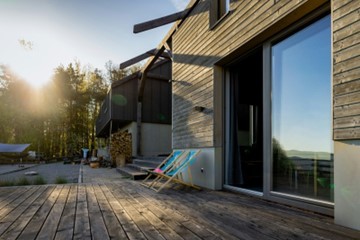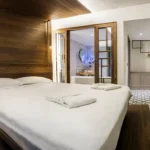Full-wood buildings guide, sustainable timber property, wooden build merchants materials
Why Full-Wood Buildings are a Common Sight
5 February 2024
Why Full-Wood Buildings are a More Common Sight in 2024?
Why are we hearing and seeing more of these full-wood buildings? What are they and why are they useful? These are questions that will be getting answered later on. As we go into the new year, we are seeing more people be conscious of being more sustainable. In this guide, we explore why full-wood buildings are a more common sight in 2024.
What are Full-Wood Buildings?
If we are to be seeing more of them, we will have to understand what they are and why they are so useful. Full-wood buildings, also known as mass timber buildings, are structures built using engineered wood products for the structural elements, enveloping material, and interior finishes. Mass timber products like cross-laminated timber, nail-laminated timber, and laminated veneer lumber are used for walls, floors, beams, and columns. This replaces concrete and steel which is a more sustainable product to use as we are attempting to battle climate change.
With full wood buildings, the wood is left exposed for interior walls, floors, and ceilings rather than covered with drywall or other finishes. This could be a part of the style or theme that you are going for in your garden. If you need some help making your dream a reality, consider hiring some building merchants for this bigger project.
Sustainability
We can all agree that climate change is an issue that all people need to start doing their part in using more sustainable products. Wood is a renewable resource that can be replanted, unlike concrete or steel which rely on extraction of finite raw materials.
If you think about how things get made and the manufacturing power it needs to get made, then this all creates a carbon emission. The wood products require less energy to manufacture and transport to building sites compared to other building materials. They also act as carbon storage – locking away carbon instead of releasing emissions like concrete production does.
A surprising fact is that using exposed wood interiors improves indoor air quality and has been linked to lower stress levels in occupants. So, as well as being good for the environment, there are health benefits to it as well, while being a lot cheaper. The only downside is that wood is subject to inflation as the demand is higher currently, but if there are more people using wood, then this creates more of a need to supply people with what they want.
Aesthetic
Wood looks nice in general and leaves a lot of room for creativity as it is versatile and many things can be done with it when coming up with a theme or style. Wood tends to make interior spaces feel brighter and airier and the reflective qualities of lighter wood tones prevent spaces from feeling too dark. This creates a calming environment that is enjoyable to be around. The natural patterns and tones of wood are thought to have a psychologically calming influence on people, helping reduce stress.
Wood buildings are a timeless classic that will never fully go out of trend, letting you always be in style with a bright breathable room.
Comments on this guide to Full-wood buildings article are welcome.
Architecture
timber-frames-for-cob-construction
UK sustainable timber industry
Historic Edinburgh homes interior design
West Town Edinburgh Property Vision
Comments / photos for the Full-wood buildings advice page welcome.




